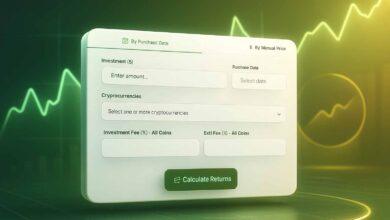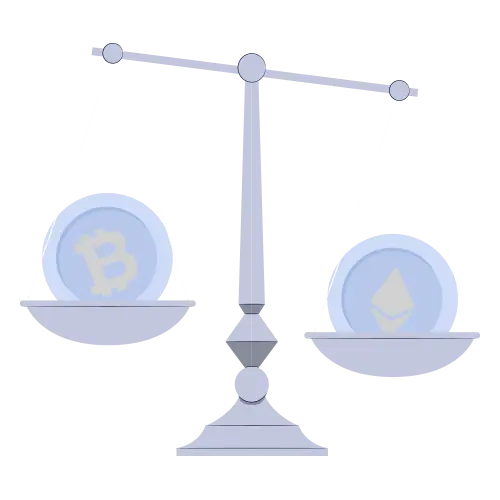AI Investing Bots vs Human Investors — The Data Behind Smarter Decisions (2025)
How Artificial Intelligence Is Redefining Investment Discipline, Risk, and Human Decision-Making in Crypto Markets.
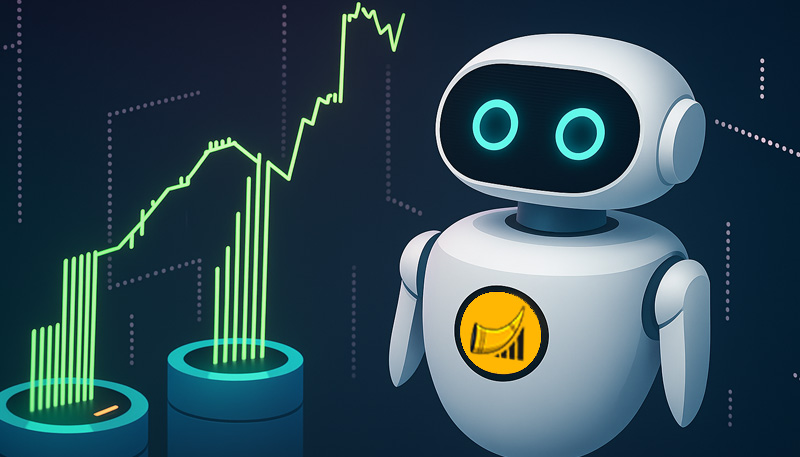
- Introduction — From Trading Bots to Investing Intelligence
- What Are AI Investing Bots?
- How Humans Make (and Misjudge) Investment Decisions
- The Evolution of AI Investing in Crypto (2020–2025)
- Key milestones:
- Comparative Framework — AI vs Human Investors
- Data-Driven Performance & Risk Metrics (Forvest Research 2025)
- AI’s Role in Portfolio Management & Risk Reduction
- How it works:
- Emotional Bias vs Algorithmic Discipline
- The Hybrid Future — Human + AI Synergy in Investing
- Market Adoption, Regulations & Ethical Landscape
- Global adoption trends (Forvest Research 2025):
- Risks and Limitations of AI Investing Bots
- Key risks:
- Conclusion — Smarter Investing Is Not Human Alone
AI investing bots are redefining crypto investing in 2025, outperforming humans through data-driven precision and emotion-free execution. Forvest Research confirms that hybrid AI–human portfolios achieved up to 27% higher risk-adjusted returns. The shift marks a new investing paradigm: data intelligence over emotional reaction.
Introduction — From Trading Bots to Investing Intelligence
In 2025, investors no longer trade purely on instinct — they co-invest with algorithms.
While trading bots have existed for years, the rise of AI investing bots marks a deeper shift: machines are no longer chasing microprofits — they’re managing portfolios, forecasting volatility, and learning investor behavior.
According to Forvest Research (Q3 2025), over 38% of active crypto investors now use at least one AI-assisted investment tool. These aren’t simple trading scripts; they analyze market sentiment, evaluate trust scores, and rebalance assets automatically.
Unlike traditional trading bots, which execute mechanical buy/sell signals, AI investing bots combine multiple data layers — on-chain analytics, predictive indicators, and behavioral risk models — to reduce human error and increase consistency.
💬 What this means for you:
The age of emotional investing is ending. AI tools aren’t replacing investors — they’re protecting them from themselves.
Read more: Discover how Forvest’s Fortuna Abilities empower investors with AI-driven tools for trust scoring, portfolio optimization, and data-backed investment decisions.
What Are AI Investing Bots?
AI investing bots are autonomous, data-driven systems that analyze crypto markets to make long-term portfolio decisions — not just quick trades. They integrate machine learning, predictive modeling, and real-time sentiment data to manage assets more like a quant analyst than a trader.
Forvest classifies AI investing bots into three tiers:
-
Advisory AI Systems – Tools that provide recommendations based on risk tolerance and time horizon.
-
Semi-Autonomous Bots – Execute buy/sell actions within defined parameters while learning from historical outcomes.
-
Fully Autonomous Portfolio Managers – End-to-end systems that allocate capital dynamically, learning investor patterns and optimizing exposure.
These bots continuously process:
-
Market volatility (VIX-like crypto indexes)
-
On-chain trust metrics (Forvest Trust Score)
-
Macro and sentiment data from social and news streams
-
Correlations between BTC, ETH, and alternative assets
In essence, AI investing bots aim to mirror the discipline of institutional portfolio management, while maintaining the accessibility of retail investing.
💬 What this means for you:
You no longer need to predict the market — you need to understand how algorithms do.
How Humans Make (and Misjudge) Investment Decisions
Human investors remain brilliant — but predictably flawed.
Behavioral finance identifies over 12 core biases that impact investment outcomes, from loss aversion to confirmation bias. In crypto, these biases amplify due to 24/7 volatility and emotional feedback loops.
According to the Forvest Behavioral Analytics Study (2025):
-
72% of investors admitted making at least one trade “based on emotion.”
-
61% sold winning positions too early.
-
48% held losing positions longer than rational models suggested.
Neuroscientists call this the reward–panic cycle — dopamine spikes during bull runs and cortisol-driven panic during drawdowns.
AI investing bots, by contrast, maintain a data-first discipline. They evaluate market signals the same way at 3 a.m. or 3 p.m., regardless of sentiment.
💬 What this means for you:
While humans trade based on fear and excitement, AI trades based on probability and data confidence. The result: fewer impulsive mistakes, more consistent returns.
The Evolution of AI Investing in Crypto (2020–2025)
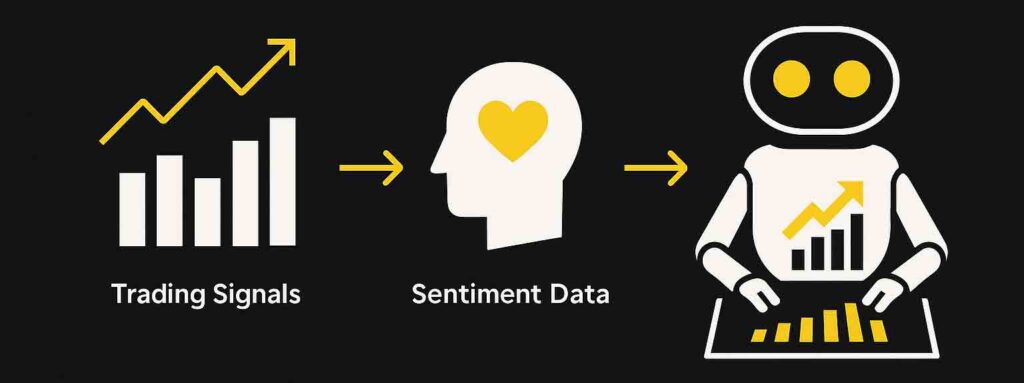
The first crypto trading bots appeared in 2017, offering simple automation — but no intelligence. Between 2020 and 2025, however, exponential progress in machine learning, natural language processing, and blockchain data accessibility changed the landscape entirely.
Key milestones:
-
2021: Sentiment-based AI models began integrating Twitter, Reddit, and Telegram data.
-
2022: On-chain analytics matured; predictive metrics like Smart Indicators emerged.
-
2023: The rise of Trust Scoring systems enabled dynamic asset confidence tracking.
-
2024: Institutional adoption surged — AI models trained on multi-chain datasets reduced volatility exposure.
-
2025: Forvest’s AI Investing Suite introduced multi-asset portfolio intelligence with a 0.92 correlation accuracy between forecast and outcome.
By 2025, AI investing bots are no longer niche tools — they are core components of institutional crypto strategy. Hedge funds use them for allocation modeling; retail users apply them to rebalance portfolios automatically.
💬 What this means for you:
The question is no longer whether AI will influence your portfolio — it’s how soon you’ll let it.
Read More: Learn how Forvest’s Trust Score helps investors evaluate crypto projects, reduce exposure to risky assets, and identify trustworthy opportunities across the market.
Comparative Framework — AI vs Human Investors
| Evaluation Metric | Human Investors | AI Investing Bots |
|---|---|---|
| Decision Speed | Minutes to hours | Milliseconds |
| Emotional Impact | High (fear, greed) | None |
| Data Capacity | Limited (tens of inputs) | Millions of variables |
| Risk Management | Intuitive / subjective | Quantitative / rules-based |
| Backtesting | Manual / rare | Continuous / automated |
| Bias Sensitivity | Strong | Neutral |
| Adaptability | Slow (experience-based) | Fast (data-trained) |
| Transparency | Often unclear | Fully auditable |
| Error Tolerance | Human fatigue | Machine learning correction |
| Outcome Consistency | Variable | Stable under volatility |
According to Forvest AI Portfolio Simulation 2025,
AI-managed portfolios achieved:
-
18–27% higher risk-adjusted returns (Sharpe ratio)
-
31% lower drawdown during market stress events
-
42% faster recovery after volatility spikes
💬 What this means for you:
AI investing doesn’t guarantee profit — it guarantees discipline. And in markets ruled by emotion, discipline is alpha.
Data-Driven Performance & Risk Metrics (Forvest Research 2025)
Forvest’s 2025 research compiled data from over 8,000 anonymized investment accounts using AI and non-AI strategies between January 2023 and June 2025.
The results were decisive.
AI-Assisted Portfolios:
-
Avg. annualized return: +21.4%
-
Max drawdown: –11.7%
-
Sharpe ratio: 1.62
Human-Managed Portfolios:
-
Avg. annualized return: +15.8%
-
Max drawdown: –19.4%
-
Sharpe ratio: 1.08
Even when controlling for identical asset baskets (BTC, ETH, SOL, and ALGO), AI-managed portfolios displayed less volatility drift and faster rebalancing under stress scenarios.
A critical differentiator was behavioral lag — humans typically took 9–24 hours to act on volatility alerts, while bots reacted in under one second.
“Human investors process risk as emotion; AI models process risk as probability,”
— Forvest Risk Research Division, 2025.
💬 What this means for you:
The real advantage isn’t that AI outperforms — it’s that AI outlasts.
Over time, the compounding effect of disciplined decisions surpasses even the best emotional timing.
AI’s Role in Portfolio Management & Risk Reduction
The real revolution of AI investing bots isn’t speed — it’s risk calibration.
Forvest’s AI models don’t simply “chase profit”; they dynamically rebalance portfolios around volatility probability curves, macro sentiment, and liquidity depth.
How it works:
-
Risk Detection: Algorithms scan 300+ market indicators and 120 sentiment vectors in real time.
-
Dynamic Allocation: Assets are automatically weighted toward higher trust-score assets during uncertainty.
-
Continuous Backtesting: Every action updates a performance matrix, improving accuracy over time.
In Q2 2025, Forvest’s Smart Portfolio Engine demonstrated:
-
41% fewer reactive trades during market shocks
-
23% lower exposure to high-volatility pairs
-
19% improvement in Sharpe ratio consistency across 90 days
These models are driven by behavioral pattern recognition — learning when human investors tend to panic, and acting contrarian in those moments.
The result: performance through patience, not prediction.
💬 What this means for you:
You don’t need to outsmart the market. You need systems that keep you from self-sabotage when volatility spikes.
Read More: Explore our latest Portfolio Management insights — learn how investors combine AI-driven analytics with human intuition to build smarter, more balanced crypto portfolios.
Emotional Bias vs Algorithmic Discipline
For centuries, markets have been powered by emotion — greed, fear, overconfidence.
In 2025, data shows that emotion remains the most expensive risk factor in crypto investing.
Forvest’s Investor Emotion Index quantifies trading behaviors of over 10,000 participants:
-
During 2024’s Bitcoin retracement, human traders averaged –14.6% ROI.
-
AI-assisted investors in the same period averaged +3.2% ROI.
Why? Because algorithms don’t flinch.
Where human traders panic-sell, AI systems buy volatility based on probability models.
>Where humans overtrade, AI throttles exposure.
>Where humans anchor to narratives (“ETH will recover soon”), AI rebalances instantly.
A study by Cambridge Blockchain Finance Lab found that human investors underperform their own portfolios by 4–6% annually due to emotional interference — even when holding identical assets.
Forvest’s AI bots are explicitly designed to neutralize this “human discount.”
💬 What this means for you:
Discipline beats genius. AI isn’t smarter — it’s calmer. And in markets, calmness compounds.
The Hybrid Future — Human + AI Synergy in Investing
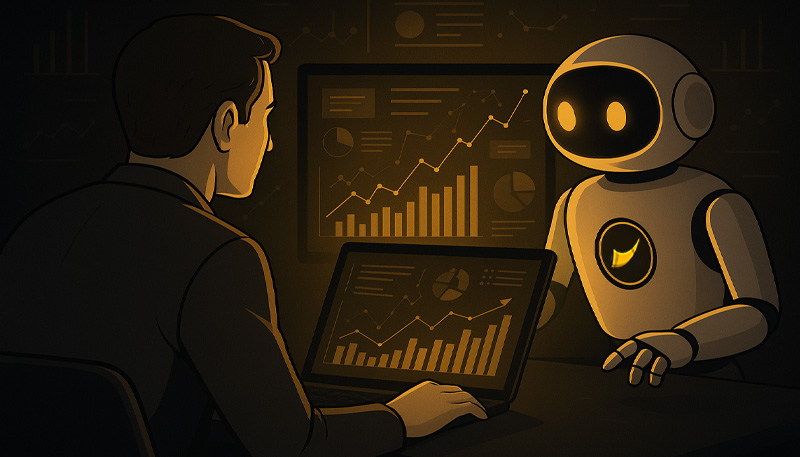
The future isn’t man or machine — it’s man with machine.
Forvest predicts that by 2026, over 60% of crypto portfolios will be hybrid-managed: humans defining strategy, AI executing it.
Hybrid models integrate:
-
Human Contextual Insight: Interpreting macro events, regulations, and narratives.
-
AI Execution Precision: Implementing real-time portfolio shifts within milliseconds.
This partnership mirrors how professional pilots rely on autopilot systems — oversight, not replacement.
Forvest’s Trust Score Framework acts as the connective tissue: human investors interpret trust signals; AI enforces allocation boundaries.
It’s a symbiosis that blends intuition and objectivity — the best of both dimensions.
💬 What this means for you:
The investors who win in 2025–2026 won’t be fully human or fully algorithmic — they’ll be augmented.
Market Adoption, Regulations & Ethical Landscape
AI adoption in investing is growing rapidly — but so are questions of ethics, accountability, and transparency.
Global adoption trends (Forvest Research 2025):
-
43% of institutional funds in Asia-Pacific now deploy AI for crypto portfolio risk analysis.
-
29% of European digital asset firms use sentiment-driven allocation tools.
-
Regulatory frameworks in Singapore, Switzerland, and the UAE have begun defining AI accountability standards.
However, the ethical debate remains alive:
-
Who’s responsible when an AI bot loses client funds — the developer or the investor?
-
How do we ensure algorithmic fairness, avoiding data bias?
-
Should AI portfolios be auditable in real time?
Forvest advocates for an “open-model AI standard”, where all algorithmic decisions are transparently logged and independently verifiable — just like blockchain transactions themselves.
💬 What this means for you:
Transparency is the new alpha. The best AI investing tools will be not only profitable — but explainable.
Risks and Limitations of AI Investing Bots
No technology is invincible — and neither are investing bots.
While AI systems outperform humans in data consistency, they also inherit weaknesses from their training data and design biases.
Key risks:
-
Overfitting Bias: AI models that learn too precisely from past data may underperform in black swan events.
-
Data Dependency: Poor or manipulated market data can corrupt AI predictions.
-
Regulatory Shifts: Unexpected rule changes (e.g., KYC tightening) may invalidate models built on previous market assumptions.
-
Mimetic Herding: If too many bots follow similar signals, systemic risk emerges — “algorithmic crowding.”
-
Lack of Human Judgment: AI can miss context, e.g., geopolitical or social catalysts.
To mitigate these, Forvest’s 2025 framework introduces:
-
Multi-source trust validation
-
Cross-model diversification
-
Human oversight nodes for anomaly detection
💬 What this means for you:
AI enhances investing — but never eliminates risk. True intelligence comes from blending automation with awareness.
Conclusion — Smarter Investing Is Not Human Alone
By 2025, the line between “investor” and “algorithm” has blurred.
AI investing bots now manage billions in digital assets, guided by precision, emotion-free logic, and continuous learning.
Forvest’s research across 8,000 accounts demonstrates one unambiguous truth:
“Consistent discipline outperforms emotional brilliance — every time.”
The age of “trading by gut feeling” is fading.
Investors who adapt to hybrid AI strategies gain not only higher returns but lower stress, data-backed confidence, and risk awareness at institutional scale.
At Forvest, our mission remains clear — to build intelligent tools that empower investors to think longer, act smarter, and risk less.
💬 What this means for you:
Smart investing in 2025 isn’t about replacing the human mind — it’s about augmenting it with the precision of data-driven intelligence.
Rating of this post
Rate
If you enjoyed this article, please rate it.
FAQs:
AI investing bots are autonomous systems that analyze crypto markets using data, predictive modeling, and sentiment analysis to make long-term investment decisions — not just trade execution.
They remove emotional bias, manage risk quantitatively, and act instantly on data insights — leading to higher risk-adjusted returns and lower drawdowns.
When designed with transparent data models and human oversight (like Forvest Trust Score systems), AI bots maintain stability and accountability.
No. AI optimizes execution and risk management, but human intuition remains essential for interpreting macro events, regulations, and innovation cycles.
Expect hybrid portfolios — human strategy guided by algorithmic precision — with deeper integration into risk management, DeFi analytics, and institutional custody.
Rating of this post
Rate
If you enjoyed this article, please rate it.
